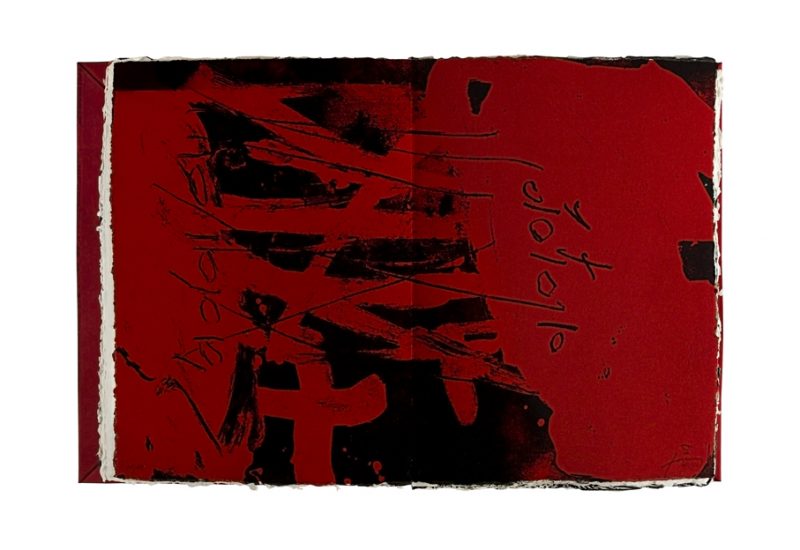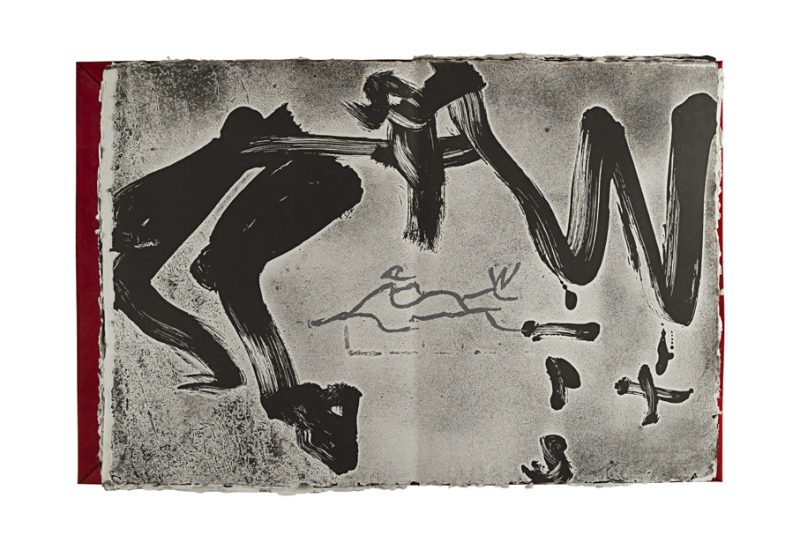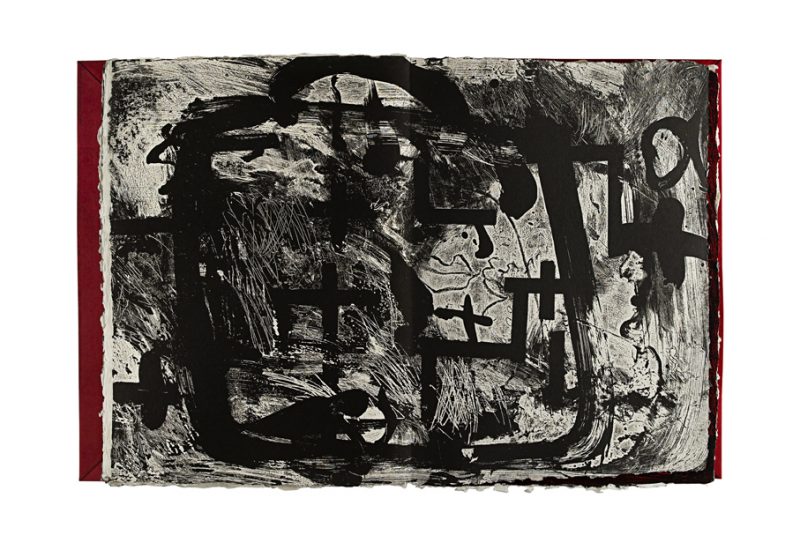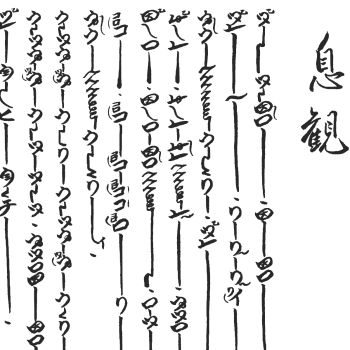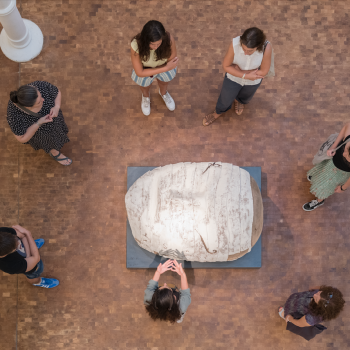16/03/2022 -19/06/2022 – Fundació Antoni Tàpies

Joan Brossa and Antoni Tàpies, Carrer de Wagner, 1988
As part of the celebration of the 175th anniversary of the Gran Teatre del Liceu, the Fundació Antoni Tàpies is showing the artist’s book by Joan Brossa and Antoni Tàpies Carrer de Wagner (1988) on display in the Library. Under the motto ‘Museums and the Liceu: a shared history’, this celebration brings together various museums and collections in Catalonia, such as Fundació Joan Miró, MACBA, Museu Picasso and Museu d’Art de Girona, and more than one hundred museums from all over Catalonia. In addition to showing a work related to theatre and music in general, or to the Liceu in particular, there is a digital environment where you can find the collaborating museums and check all the pieces on display. The initiative also circulates through social media.
Antoni Tàpies was a music lover. Richard Wagner, a renovator of the operatic genre, was one of his favourite composers. In a country full of avant-garde concerns during the Republic, his parents, being members of the Liceu, passed on to him the euphoria of musical Barcelona from a very young age, as he explains in his Memoir.
‘The glory of having a Pau Casals, whose recordings we heard adoringly in solo performances or accompanied by the famed Cortot and Thibaud. Or the Orfeó Català that fired us with so many patriotic sentiments. Or the Liceu, the importance of which my father emphasised by reminding us that it presented the first authorised premiere of the awe-inspiring Parsifal, following the expiry of Wagner’s own prohibition [on it only being performed in Bayreuth]. […] My father also fostered my appreciation of music, which he and my mother loved. So, I became familiar with Bach, Mozart, Beethoven, Wagner, and the Romantic composers, and we acquired a significant record library. Bach was, to be sure, the number one favourite. But my father said that he would like to die listening to Parsifal and urged me to play it a soon as we saw him near death.’[1]
Indeed, the Liceu was the first European theatre where Parsifal premiered on 31 December 1913, just after the expiration of the Bayreuth Theatre’s exclusive performance up to thirty years after the composer’s death. Wagner’s son-in-law, Franz Beidler, conducted the orchestra. The concert was an event and the next day the newspaper La Vanguardia would widely echo it, filling the front page and four inside pages.
Music was very present throughout Tàpies’ life and musical references appear in several of his works, as in the series of twenty lithographs Variacions sobre un tema musical (Variations on a musical theme, 1987). His admiration for Wagner is reflected in the diptych in the Collection of the Fundació Antoni Tàpies entitled Urbilder (díptic) (Urbilder [diptych], 1988), a large portrait of the composer.
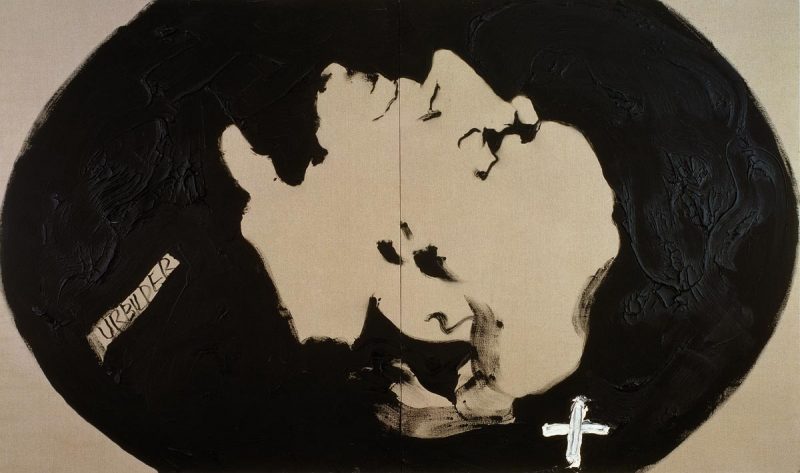
Antoni Tàpies, Urbilder (diptych), 1988. Painting on canvas, 300×500 cm.

Antoni Tàpies, Variacions sobre un tema musical 18, 1987. Lithograph with relief, 70 × 54 cm.
The passion for Wagner was shared with Joan Brossa in Wagnerian evenings that would take place regularly for years.
‘Wagner continued to be my idol. A recording of Tristan sung by Kirsten Flagstad and conducted by Wilhelm Furtwängler gave me many sleepless nights (and perhaps it also gave my neighbours sleepless nights). Even though I liked to listen to music alone, some days I had Brossa come over and we shared the ecstasy of Act Two, or many other pieces. Usually, Brossa would have me play them over and over.’[2]
Joan Brossa was proud to have been born on the street dedicated to the musician in the Sant Gervasi district of Barcelona. The street, which disappeared with the opening of a new avenue, provides the title of the bibliophile’s book they made together. Carrer de Wagner is a tribute to the composer, and was published in Barcelona by Galeria Toni Tàpies-Edicions T, with 13 texts written by Brossa between 1941 and 1987 – most of them previously published – and 10 etchings by Antoni Tàpies.
The number of poems, 13, is not accidental. It is due to certain coincidences in the life of Richard Wagner concerning this number, as stated in the book’s colophon: ‘the strange significance that had 13 in the life of Wagner’ – he was born in 1813 and died on 13 February 1883, exiled for 13 years, with 13 finished operas… Brossa reflects this in his poem ‘En els seus tretze són tretze’ (In his thirteen is thirteen) dedicated to the composer.[3]
Richard Wagner va néixer l’any 1813.
Un tretze de març va estrenar Tannhäuser a París.
Va estrenar la Tetralogia un tretze d’agost.
El matrimoni amb Còsima va durar tretze anys.
Un tretze de gener va acabar Parsifal,
i l’estrena a Barcelona va ser el trenta-u de desembre de 1913.
Va morir el tretze de febrer de 1883, tretze anys
després de la declaració de guerra amb França.
I si sumen les xifres de l’any del seu naixement
ens donen tretze com a resultat.
Joan Brossa, El dia a dia (1988-1992)
Richard Wagner was born in 1813.
Tannhäuser premiered in Paris on 13 March.
The Tetralogy premiered on 13 August.
The marriage with Cosima lasted thirteen years.
Parsifal finished on 13 January,
and its premiere in Barcelona was on 31 December 1913.
He died on 13 February, 1883, thirteen years
after the declaration of war with France.
And if you add up the numbers in the year of his birth
they give us thirteen as a result.
Joan Brossa, El día a día (1988-1992), p. 132
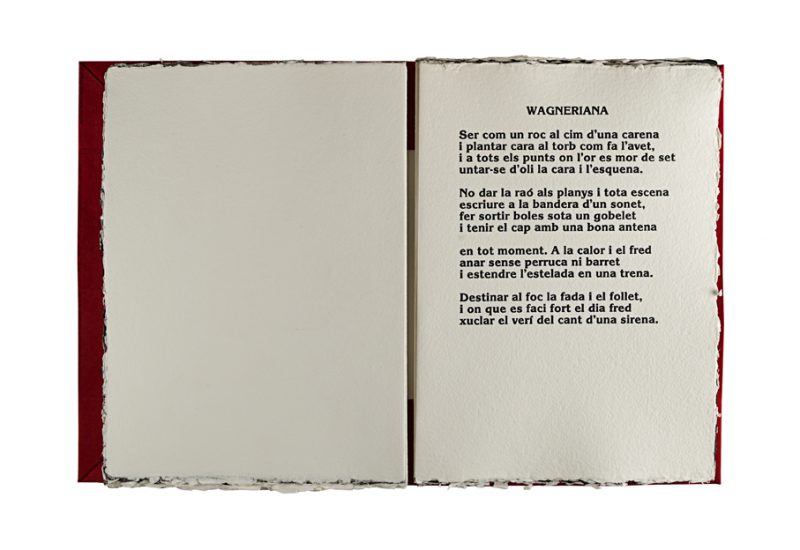

Joan Brossa, Wagneriana (1965-1966) and Liceu [1988]
In the book, Tàpies plays with red velvet to allude to the curtains of the theatre, as well as making the letter ‘L’ appear on the cover, which evokes the Liceu emblem.
In the etchings, where black and red predominate, we see, for example, the letter W or images alluding to the cavalcade of the Valkyries at the beginning of Act III of the opera Die Walküre.
The edition consists of 150 copies numbered 1–150; 15 copies H.C. numbered I-XV. All copies are signed by the author and the artist. A suite of prints with wide margins numbered 1–45 and signed by the artist was also released. It was printed by Joan Barbarà on handmade paper from the Molí Aquari in Banyoles. The work is in a black velvet case also made by Antoni Tàpies.

The book was presented at the Gran Teatre del Liceu on 23 May 1990, with the assistance of the two authors. This would be the last joint collaboration of the two, who since El pa a la Barca, in 1963, produced several artist books, such as Novel·la, Fregoli, Nocturn matinal, Poems from the Catalan, U no és ningú, El rei de la màgia, and others.

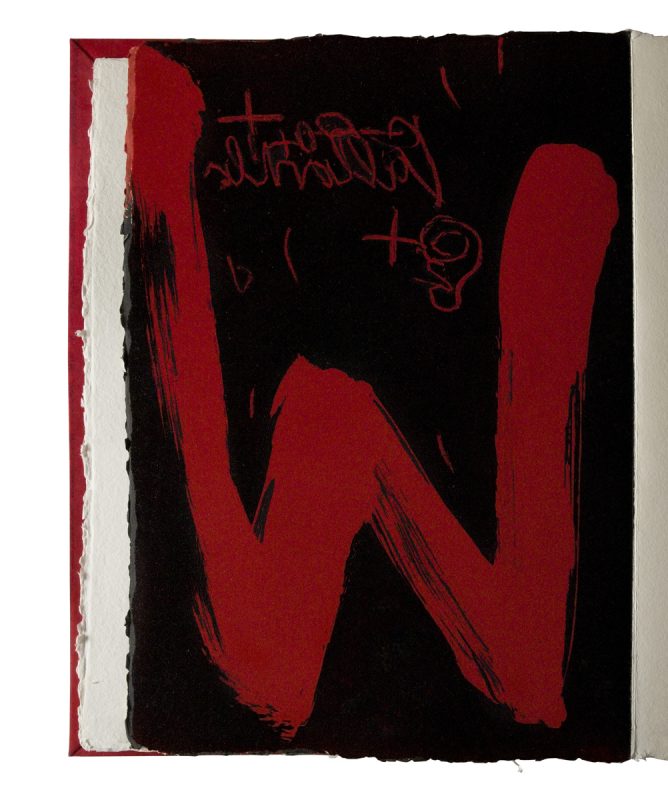
JOAN BROSSA AND ANTONI TÀPIES
Carrer de Wagner, 1988
Thirteen texts by Joan Brossa and ten prints by Antoni Tàpies (including cover)
Publisher: Galeria Toni Tàpies-Edicions T, Barcelona
Printer: J. Barbarà, Barcelona
Size: 59.6 x 44.8 x 8.6 cm (case); 54.1 x 39.4 cm (book); 42.6 x 38 cm and 42.6 x 76 cm (paper).
[1]TÀPIES, Antoni. Memòria personal. Fragments per a una Autobiografia. Barcelona: Crítica, 1977; (A Personal Memoir. Fragments for an Autobiography. Complete Writings. Vol. I. Barcelona: Fundació Antoni Tàpies; Bloomington & Indianapolis: Indiana University Press, 2010, p. 85, p. 90.
[2]TÀPIES, Antoni. Ibid., p. 314.
[3]BROSSA, Joan. El dia a dia, Barcelona: Edicions 62, 2007, p. 132.



